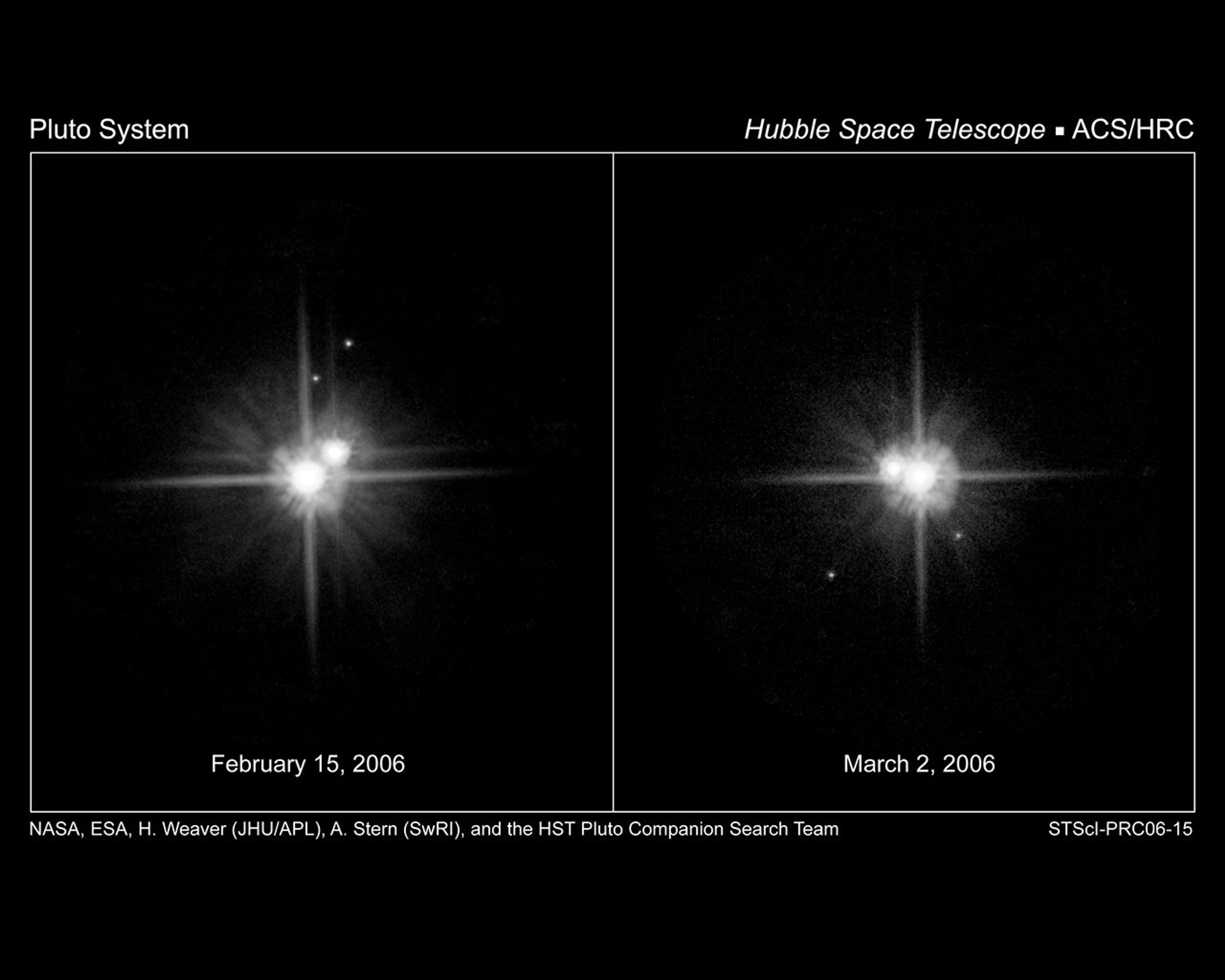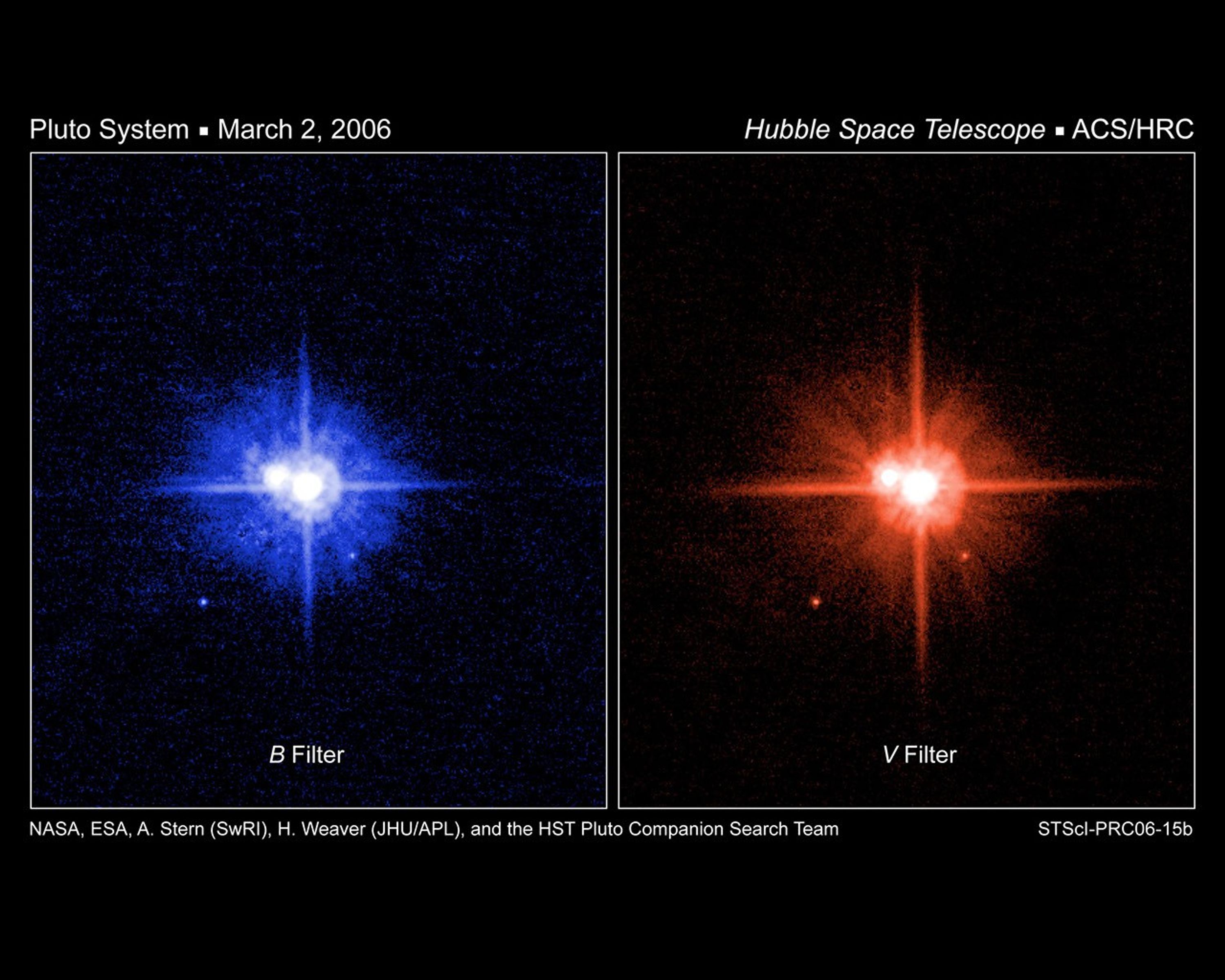The latest NASA Hubble Space Telescope images of Pluto's two newly discovered satellites reveal that the new moons have the same color as Charon. All three of Pluto's satellites reflect the Sun's light equally across the visible spectrum and have essentially the same color as Earth's moon. Pluto, in contrast, has a reddish hue. The common color of the moons further reinforces the idea that all three moons were born from a single titanic collision between Pluto and another similarly sized Kuiper Belt object billions of years ago. The color exposures were made on March 2nd in both red (F606W) and blue (F435W) filters using Hubble's Advanced Camera for Surveys. The Pluto team hopes to make further observations in more color filters to more precisely characterize the moons.
1 min read
Hubble’s Latest Look at Pluto’s Moons Supports a Common Birth
Related Images & Videos

Hubble's Latest Look at Pluto's Moons Supports a Common Birth
This pair of NASA Hubble Space Telescope images shows the motion of Pluto's satellites between February 15th and March 2nd, 2006. Both images were taken through a red filter (F606W) using the High Resolution Channel (HRC) of the Advanced Camera for Surveys (ACS). During this...

Hubble Color Images of Pluto's Moons Support a Common Birth
These NASA Hubble Space Telescope images of Pluto were taken on March 2, 2006, using the High Resolution Channel (HRC) of the Advanced Camera for Surveys (ACS). The image on the left was taken through a blue filter (F435W), and the one on the right was taken through a red filter...

Schematic of the Pluto System
The new HST/ACS observations made on March 2nd reveal that all three of Pluto's satellites are neutrally colored, unlike reddish Pluto itself. Pluto's reddish color is believed to be due to reddening agents created by the effects of sunlight acting on its nitrogen and methane...
Share
Details
Claire Andreoli
NASA’s Goddard Space Flight Center
Greenbelt, Maryland
claire.andreoli@nasa.gov
































